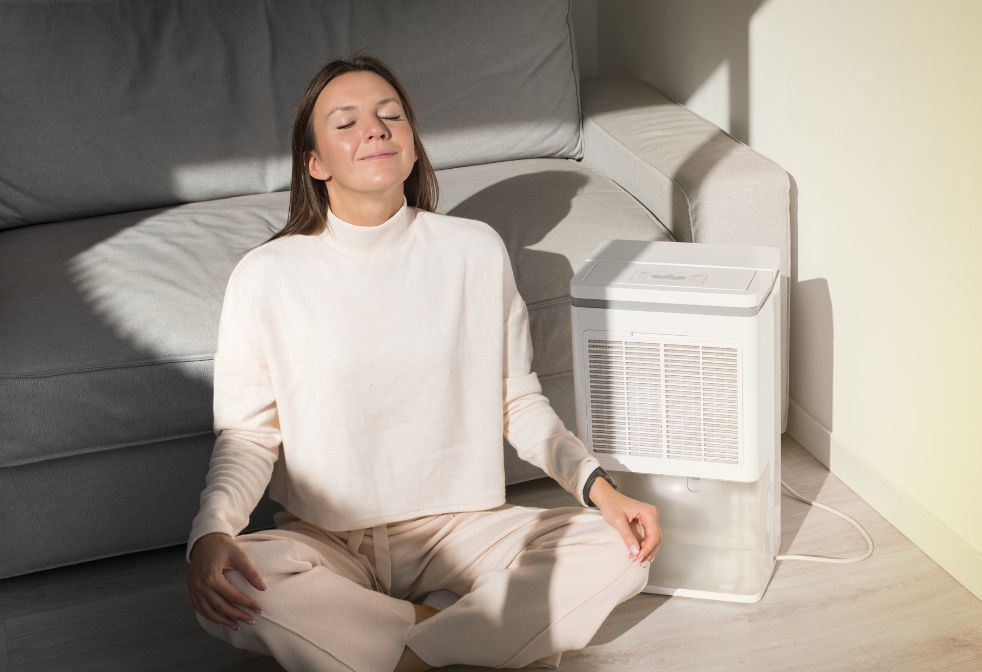Navigating the complex world of baby room temperature and humidity can be daunting for parents. You’re likely already aware that creating a comfortable environment for your delicate newborn is critical, but did you know that the Environmental Protection Agency recommends keeping indoor humidity levels between 40-60%?
This article will guide you through understanding, achieving, and maintaining this optimal range to ensure your little one’s health and comfort.

Ready to create the perfect haven for your baby? Let’s jump in!
Importance of Maintaining Proper Humidity Levels for Babies
Maintaining optimal humidity levels in a baby’s room is pivotal for their health and well-being. Why so? Babies have narrow nasal passages, which makes them susceptible to respiratory issues.
When humidity stays within the recommended range of 40% to 60%, it can significantly boost your baby’s respiratory health by keeping those tiny nostrils clear.
Moreover, proper humidity control is crucial in creating a safe environment for your little one. This range restricts the growth of harmful bacteria and molds – organisms that flourish in higher moisture conditions.
These microscopic threats thrive at elevated levels beyond 60%, potentially harming your baby’s immune system. Furthermore, maintaining appropriate humidity levels ensures better respiratory health and shields against mold growth and bacterial multiplication.
In addition, ensuring the right balance between temperature and humidity in your baby’s room brings comfort. It prevents dry air conditions that would otherwise lead to skin irritations or even aggravation of eczema symptoms if present.
Recommended Humidity Levels for a Baby's Room
Understanding the correct humidity levels for a baby’s room equates to ensuring your little one’s comfort, health, and safety. Doctors and experts recommend maintaining an ideal humidity range of 30% to 60%.
This sweet spot ensures that bacteria find it hard to grow, providing a healthy environment that aids in safeguarding your baby’s overall health and wellness.
Using a humidifier effectively increases humidity within this optimal range in your nursery. In addition, monitoring and adjusting these levels will ensure you’re always staying within ideal conditions.
Setting the optimal humidity level is pivotal when creating a comfortable sleep environment for our little one. Specifically, a range between 40-60% strikes the perfect balance.
Above this limit can lead to discomfort due to high moisture content in the air, while going below makes the ambient temperature feel much colder than it is.
By doing so, you’ll have taken vital steps toward ensuring your child sleeps comfortably without risking potential health issues caused by improper room conditions.
Tips for Achieving and Maintaining the Ideal Humidity Level in a Baby's Room

Creating the optimal humidity environment for a baby’s sleep may seem challenging. Still, with these helpful tips, you can quickly achieve and maintain ideal conditions in your child’s nursery.
- Invest in a reliable humidifier: A whole-home humidification system can help achieve the ideal humidity level for a baby’s room. Look for models that allow various settings so you can adjust them to fit within the recommended 30% to 60% range.
- Regular monitoring: Monitor the humidity levels in your baby’s nursery. This will help you identify if any changes are needed to stay within the 30% – 60% ideal range specified by EPA.
- Use a hygrometer: A hygrometer is an instrument used to measure the humidity in a particular space, like a baby’s room. It could be beneficial for maintaining healthy humidity levels.
- Be cautious with humidifiers: While they can be great tools for maintaining comfort, excessive use can lead to high humidity, which you want to avoid. Always ensure to balance their usage.
- Taking note of seasons: The time of year can significantly impact indoor air quality, so make adjustments accordingly to avoid excessive or low humidity levels.
- Ensuring proper ventilation: Control moisture and prevent issues by keeping your baby’s room ventilated correctly.
- Balancing temperature and humidity: These factors are crucial for creating an optimal sleeping environment for babies, so always consider them together while setting up your nursery.
- Routine maintenance checks: Maintain your humidifying system regularly to ensure it works efficiently and contributes positively towards achieving a suitable environment for baby’s sleep.
Conclusion
In conclusion, maintaining the ideal humidity level in a baby’s room is crucial for their overall health and well-being. The recommended range of 30% to 50% ensures optimal comfort and prevents the growth of bacteria and viruses.
Parents can quickly achieve and maintain balanced humidity levels by using a humidifier or dehumidifier, creating a comfortable environment for their little ones. Remember, keeping your baby’s room within the recommended humidity range is vital to ensuring their safety and comfort.
